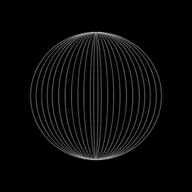General Properties of Waves

Waves are the transfer of energy through oscillations in a medium or through space, characterized by properties like frequency, wavelength, and amplitude.
Waves transfer energy without transferring matter.
Simply, Waves carry energy without moving the stuff they pass through.
This means that they do not require matter to move.
Features of a wave
| Term | Definition |
|---|---|
| Wavefront | An imaginary line connecting points of the same phase. |
| Wavelength | The distance between two consecutive wavefronts. |
| Frequency | The number of wavefronts passing a point per unit time. |
| Crest (peak) | The highest point of a wave. |
| Trough | The lowest point of a wave. |
| Amplitude | The maximum displacement from the equilibrium position. |
| Wave Speed | The rate at which the wave travels through a medium. |
We will take a look at the above features in greather depth further along in this chapter.
Types of waves
There are two types of waves:
- Transverse waves
- Longitudinal waves
Transverse waves
A wave in which oscillations are at right angles to the direction of motion is called a transverse wave
In other words, the direction of vibration is perpendicular (at right angles) to the direction of wave motion.
Examples: Ripples on water, electromagnetic radiation
Longitudinal waves
A wave where the oscillations are parallel to the direction of motion is called a longitudinal wave.
In other words, the direction of vibration is parallel to the direction of wave motion.
Example: Sound waves
Waves Simulation
Here is a waves simulator. You can choose between water, sound, and light and adjust the amplitude and frequency across different mediums to obtain a range of results.
We highly recommend giving this a shot to further sharpen your understanding of waves.
Longitudinal waveforms have compressions and rarefactions
Now, its time for some math. Let's take a look at the wave equation-
The wave equation
v =λ × f
Where:
- v = velocity (m/s)
- λ = wavelength (m)
- f = frequency (Hz)
Reflection

Waves reflect off smooth, plane surfaces rather than getting absorbed
Angle of incidence = angle of reflection
Rough surfaces scatter the light in all directions, so they appear matte and unreflective Frequency, wavelength, and speed are all unchanged
Refraction

The speed of a wave changes when it enters a new medium
If the wave enters a more optically dense medium, its speed decreases and it bends towards the normal
If the wave enters a less optically dense medium, its speed increases and it bends away from the normal
In all cases, the frequency stays the same but the wavelength changes.
Diffraction

Waves spread out when they go around the sides of an obstacle or through a gap
The narrower the gap, the more the diffraction
The greater the wavelength, the more the diffraction
Frequency, wavelength, and speed are all unchanged
This is the end of this guide. Thank you so much for using IGCSE Pro!
Here's a lil song to celebrate the completed revision of this chapter-

